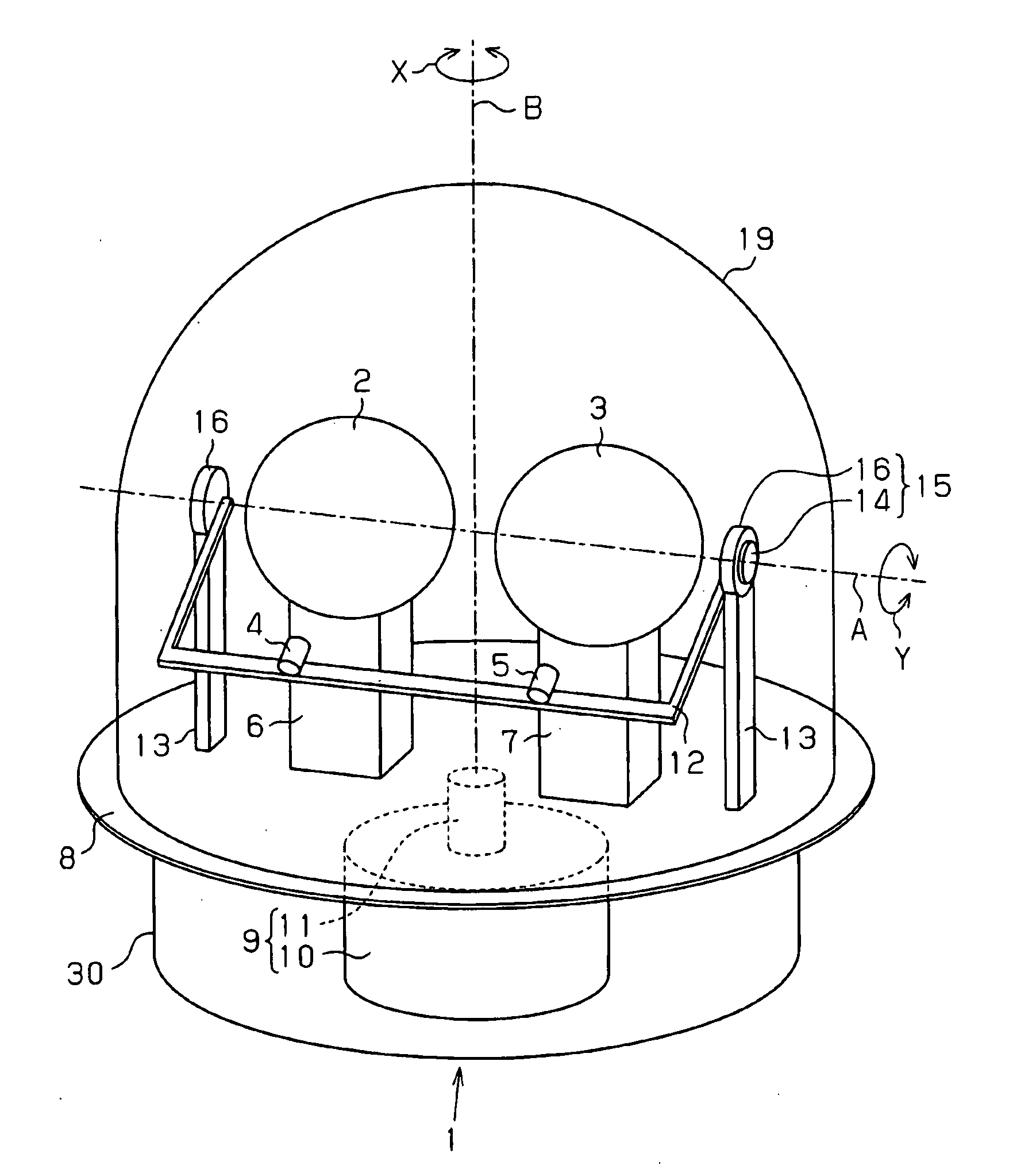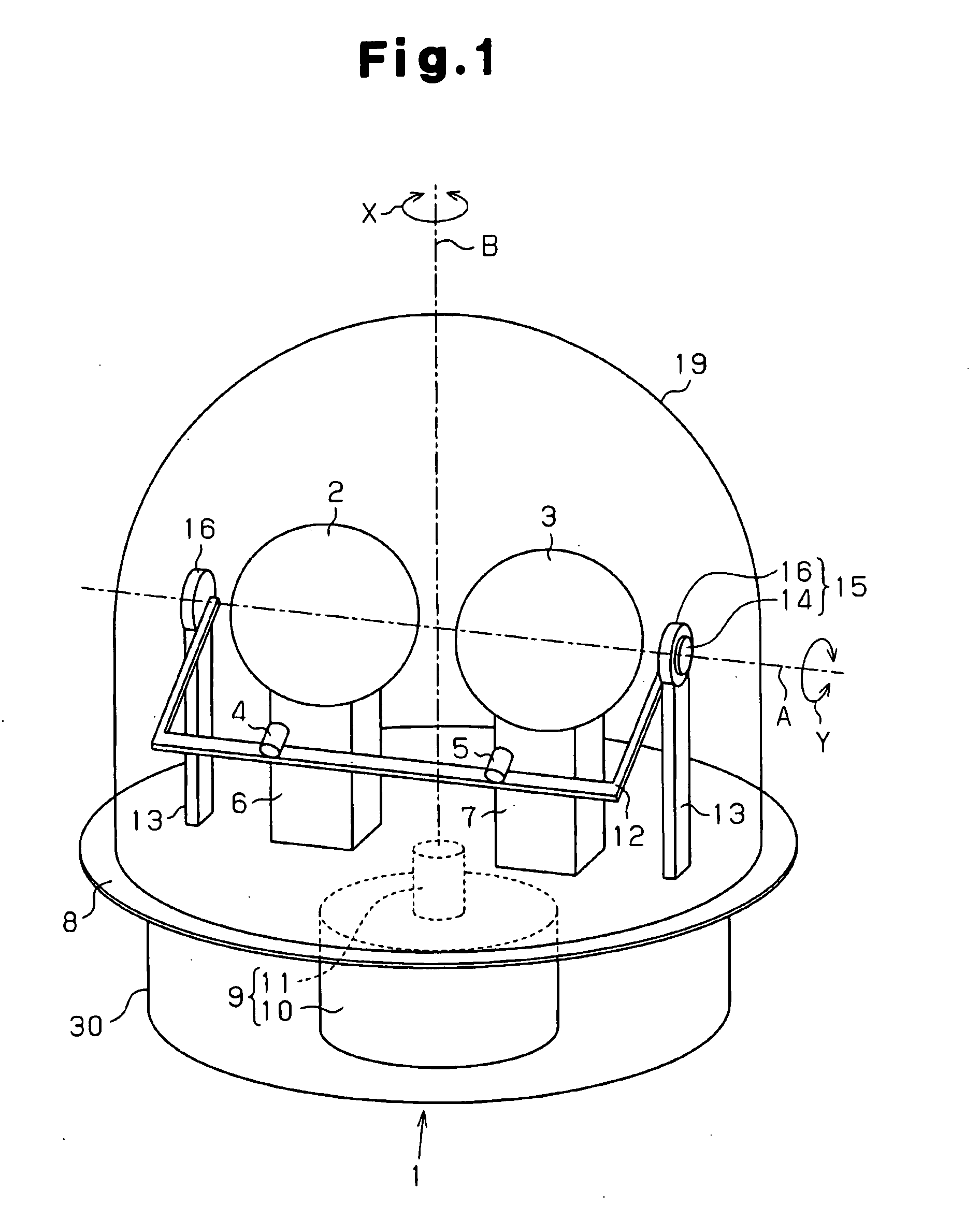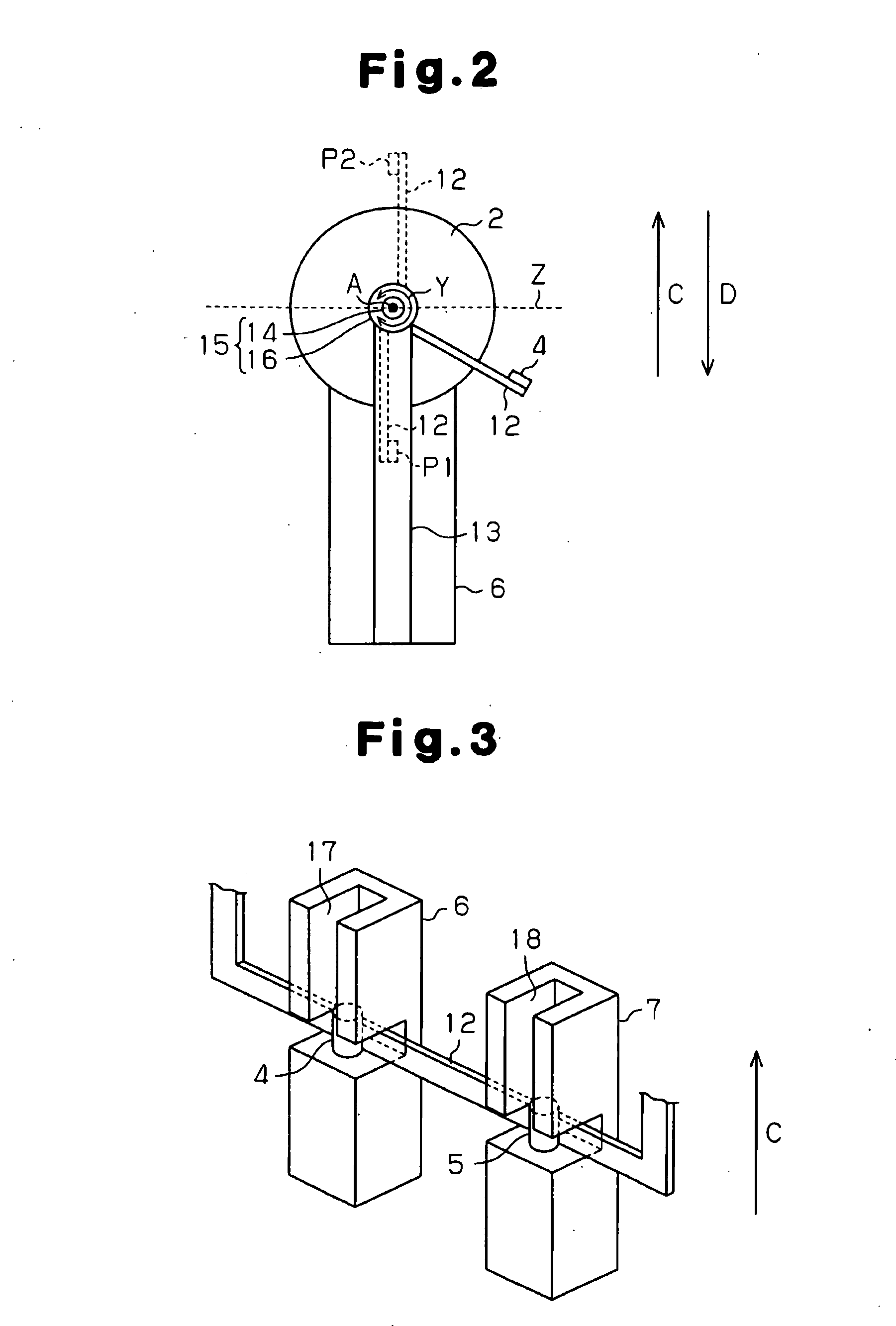Electromagnetic lens antenna device for bistatic radar
a technology of electromagnetic lens and antenna device, which is applied in the direction of antennas, instruments, climate sustainability, etc., can solve the problems of affecting the observation affecting the performance of the radar apparatus, so as to reduce the weight, prolong the life, and save the cos
- Summary
- Abstract
- Description
- Claims
- Application Information
AI Technical Summary
Benefits of technology
Problems solved by technology
Method used
Image
Examples
Embodiment Construction
[0025]One embodiment of the present invention will now be described with reference to FIGS. 1 to 4.
[0026]As shown in FIG. 1, an electromagnetic lens antenna device 1 includes an electromagnetic lens 2 for transmission, an electromagnetic lens 3 for reception, a primary radiator 4 located at the focal point of the electromagnetic lens 2, and a primary radiator 5 located at the focal point of the electromagnetic lens 3.
[0027]The electromagnetic lenses 2, 3 are spherical Luneberg lenses. A Luneberg lens is formed of dielectric material and includes a spherical core located at the center, and a plurality of spherical shells of different diameters covering the core. The dielectric material refers to a material that displays paraelectricity, ferroelectricity, or antiferroelectricity, and has no electric conducting property. The relative permittivity of the electromagnetic lenses 2, 3 changes at a constant rate along a radial direction. In each of the electromagnetic lenses 2, 3, the relat...
PUM
 Login to View More
Login to View More Abstract
Description
Claims
Application Information
 Login to View More
Login to View More - R&D
- Intellectual Property
- Life Sciences
- Materials
- Tech Scout
- Unparalleled Data Quality
- Higher Quality Content
- 60% Fewer Hallucinations
Browse by: Latest US Patents, China's latest patents, Technical Efficacy Thesaurus, Application Domain, Technology Topic, Popular Technical Reports.
© 2025 PatSnap. All rights reserved.Legal|Privacy policy|Modern Slavery Act Transparency Statement|Sitemap|About US| Contact US: help@patsnap.com



